
The word Viking comes from the ancient Norwegian language; “viking” What does pirate mean? The fascinating Vikings of the Middle Ages were not a new phenomenon in history. Nordic peoples have sought to move to Europe since prehistory. Already in the first century, the Gothic people crossed the Baltic Sea, to found almost five centuries later, what is known as the first Hispanic monarchy, the Visigoth kingdom of Toledo.
But this time he had a singularity; their rapid expansion that led them in a few years to found kingdoms in the British Isles, northern France, and even in southern Italy. They were introduced into the social structures of such important cities in the Middle Ages as Constantinople. Without forgetting that their drakkars they colonized Iceland, Greenland, and reached places as far away as the shores of Newfoundland on the American continent. The Vikings tried to conquer the world, but the world conquered them, on their return to their place of origin they brought Christianity with them, to found the kingdoms of Denmark, Norway or Sweden.
Today we want to present you in flash form, those dates that we think are most transcendental in the history of the Viking peoples, to better understand a phenomenon that has dazzled passionate fans to medieval history.
753 Colony on Lake Ladoga.
First Viking settlement outside of Scandinavia. It can be said that the drakkars Vikings tested themselves in the Baltic Sea before venturing into the Atlantic. It is difficult to ensure its dimensions, since only simple archaeological remains of materials have been found that suggest a first presence in the city of Ladoga, on the shores of the largest lake in Europe. Although it was testimonial, it was the starting point of the colonization of the Varangians, a Viking people of Swedish origin, in present-day Russia. A mostly commercial town, but not exempt from violent acts as the following century will see in Constantinople.
793 Attack on Lindisfarne.
It was not the first of the Viking attacks on British coasts, since they had been receiving their visits for some summers, but it was the most violent. Lindisfarme monastery had been founded in the year 634 and soon became one of the most important in the north of the British Isles. That June 8, date accepted by much of historiography, the Vikings razed the monastery, killing and enslaving almost all the monks. After which they stole the treasures of Christian worship and all the gold and silver from the convent. All Western Christianity was plunged into deep dejection at this furious attack by a pagan tribe. The date has been accepted as the start of the "Viking Age".

Engraving of Lindisfarne in 1798
841 Foundation of Dublin.
From the year 830 approximately the Vikings prowled the Irish coasts carrying out small raids. Ireland, despite having been Christianized by Saint Patrick in the 5th century, was an island with a high rate of autarchism. There are practically no relevant populations, hence the Vikings found what they were looking for, a land further south to settle. In the year 841 they founded a port called Dubh Linn , which will end up becoming the current capital. The island began to face the sea and thus other current Irish cities were founded, such as Limerick, Cook or Wicklow.
844 They arrive in the Iberian Peninsula.
Departing from northern France, where they had already sacked Paris, a fleet of approximately 100 drakkars they arrive at the Astur Kingdom. In the search for rivers through which to enter the mainland they ran into the troops of Ramiro I at least twice, the first in Gijón, the second in La Coruña, despite the lack of clear sources, it seems that they were rejected in both occasions, since only a month later Lisbon is sacked.
Then they went to Seville, after going up the Guadalquivir they met the Umayyad troops of Abderramán II, who inflicted one of the harshest defeats on them. The Arabs called them "mayus" something like "worshipers of fire", there, according to Umayyad sources, more than 1500 Vikings died, in addition to seeing their fleet heavily decimated.
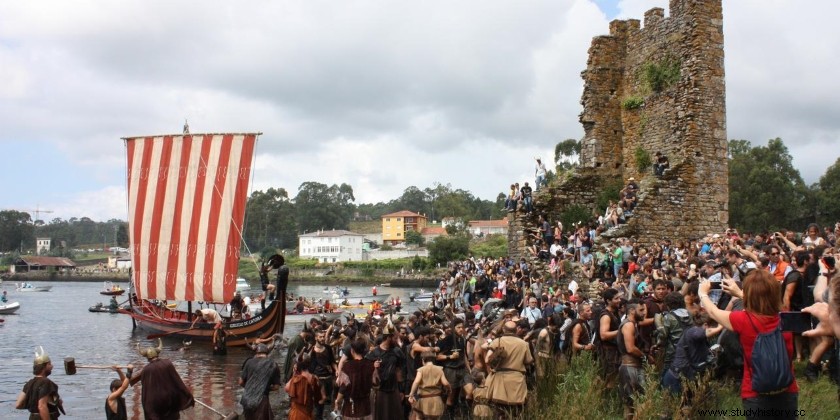
Viking festival in Catoira (Galicia) next to the walls erected for its defence.
860 Attack on Constantinople.
We left the Varangians settled in Lake Ladoga at the first point. A century later, they had already crossed all of what is now Russia, settling commercially in cities such as kyiv, the current capital of Ukraine. From there they went down the Dnieper River to the Black Sea. That year the troops of Emperor Michael III were in Asia Minor, and the powerful Byzantine fleet was fighting in the Mediterranean against pirates from North Africa. After looting various coastal cities, burning churches and convents, they planted themselves in the suburbs of Constantinople. But they were impressed by the great walls and turned back.
866 The Viking kingdom of Jórvik is born .
Ivar Ragnarsson, son of the legendary Viking king Ragnar Lobbrok, conquers the city of York, founded in Roman times. From there these Vikings originally from Denmark controlled the first Viking kingdom in Great Britain. It will last just under a century, since in the year 954 the Vikings are defeated and the territory is annexed to the British kingdom of Northumbria.
911 Foundation of the kingdom of Normandy.
The Vikings had been sowing terror in the French Northwest Territories for at least seven decades, reaching the capital Paris at least twice. The Frankish kings, unable to stop their advances, decide to agree with the Viking leader Rollón the transfer of the territories, in exchange for protection from both the Vikings and the English neighbors. One of the most important kingdoms of the Middle Ages had just been born. Normandy owes its name to its founders "Northmen". The descendants of those Christianized Vikings conquered England itself in 1066, and when the Crusaders left for Jerusalem in 1197, they were one of the largest groups.
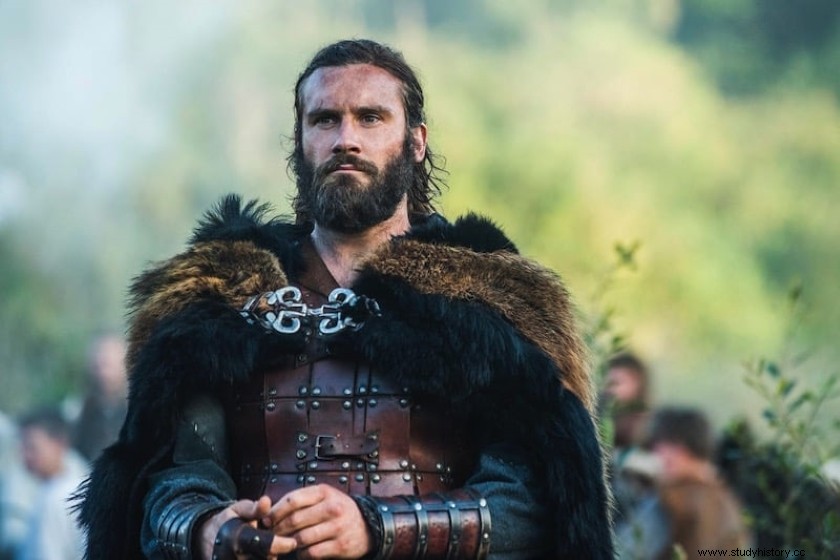
Rollón played in the series «Vikings» by Clive Standen
960 Harald of Denmark is baptized.
Harald of Denmark, nicknamed "blue tooth" converts to Christianity. The motifs sail through the mists of legends, about the demonstration of the power of the Christian God, by a German monk not to burn his hand after grasping a hot iron. It seems evident that behind it there was a non-aggression pact with the most powerful Germanic Empire militarily. What is significant is the arrival of Christianity, for the first time, in Scandinavia. Since then, the peculiar religious syncretism began, by which the hammer of the Viking God Thor obtained the shape of a Christian cross.
985 Colonization of Greenland.
Erik “the red” was one of the great Viking navigators. Norwegian and staunch defender of traditional paganism in a period of continued Christianization of the Nordic peoples. For three years before and during the summers he toured the contour of the great island, which he sold on his return to Iceland as "green". Finally, in said year 985 he began the construction of his private farm, together with a large group of settlers in a place known as Brattahlid. In that large group was his son Leif Erikson, who will star in one of the greatest feats of Viking navigation.
988 The Varangian Guard is born.
We return to Constantinople during the reign of Emperor Basil II, who had to face numerous internal revolts, led largely by the aristocracy of Asia Minor. For this, he had the help of the Viking prince Vladimir I of kyiv, whom he reached with a pact by which he would become Christian and receive Ana Porphyrogeneta, Basil's sister, as his wife. At the same time, 6,000 Varangians arrived in the capital to compose the emperor's personal guard. A Varangian guard that will remain in Constantinople for several centuries, although it will end up being diluted with the presence of Vikings arriving from Western Europe, including Normans or Danes.
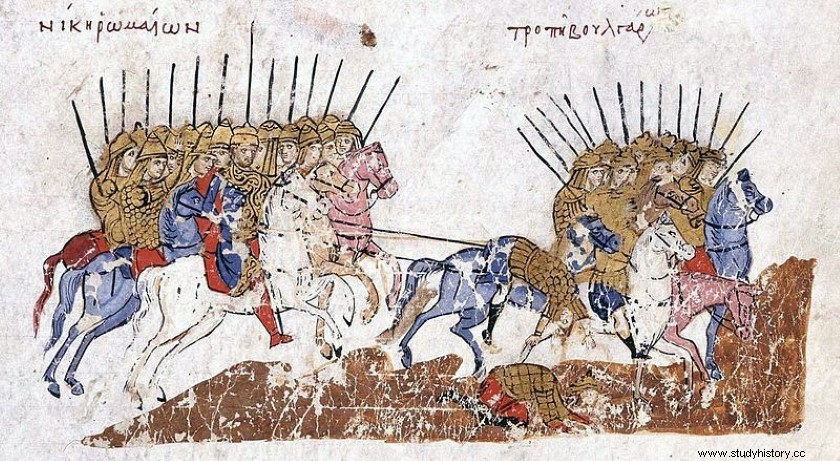
The Varangian guard, Byzantine engraving.
1000 Vikings arrive in North America.
The adventure of "Erik the Red" was continued by his son Leif Erikson. About the turn of the millennium and sailing west from Greenland he reached the present Canadian island of Newfoundland. Described in the Viking sagas as a place rich in salmon, grapes and extensive forests. An arrival that was questioned until the 60s of the 20th century, when the Ingstad couple found the remains of a Viking village in a place known as "The Jellyfish Cove". The small village was presided over by the traditional 28×15 m Nordic ship, and was declared a World Heritage Site by UNESCO in 1978.
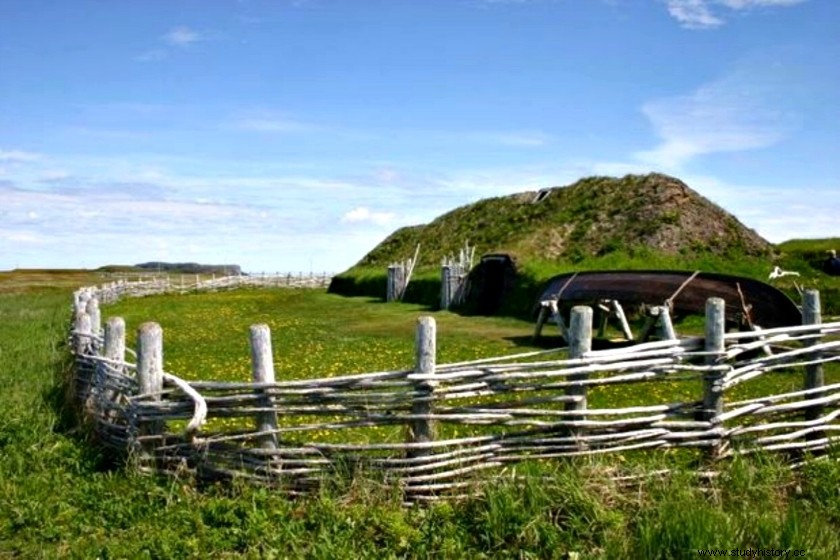
Jellyfish Cove Site
1042 The Normans in southern Italy.
Those Norman heirs of Rollon, already Christianized, become the best mercenaries of the European armies. From 1035 a group of them fought, in the service of the lords of Capua and Benevento, to expel the Byzantines from Italy. As a prize, Drago de Altavilla was decorated by the German Emperor Henry III, with the title of Duke of Apulia and Calabria. The first Norman kingdom in southern Italy had just been born, its descendants would conquer Sicily, forming one of the longest-lived kingdoms in the Mediterranean.
1048 Foundation of Oslo.
The importance of this date lies in the fact that Oslo is the only Scandinavian capital founded by a Viking king. Copenhagen is earlier and was a small fishing village, while Stockholm is from the 13th century. The story of its founder, Harald Hardrada, known as Harald III, is the very story of the Viking world. At the age of 15 and as heir to the throne, he had to emigrate from Norway, after a defeat by rebels supported by the Danish king. He ended up being one of the most outstanding members of the Varangian guard. In the service of the Byzantine emperors he fought against the Bulgarians and Muslims, earning great prestige that allowed him to return to Norway and reconquer the crown in 1047. A year later he founded Oslo. Although at first, the city was in the shadow of the great commercial port of Bergen, it will end up becoming the Norwegian capital.
1066 William the Conqueror, King of England.
We put an end to this path through the history of the Vikings with one of the bloodiest years in the history of England. At the beginning of that year, the English king Edward I died. Without an heir, the crown rested on the head of his brother-in-law Harold II. From that moment two Vikings claimed the crown willing to land on the island. Harald III of Norway the founder of Oslo, and William I of Normandy a descendant of Rollon.
Two consecutive battles stained the English land with Viking blood. In the first of them, on September 25, Harald of Norway died, along with about 5,000 Vikings in what is known as the Battle of Stamford Bridge. It was the last incursion of the Norwegian Vikings on the island. But it served in a certain way to open the door to William I. With part of the armies in the north, he crossed the English Channel and in the well-known battle of Hastings he killed the King of England Harold II. A Christian Norman Viking, William I, became King of England.
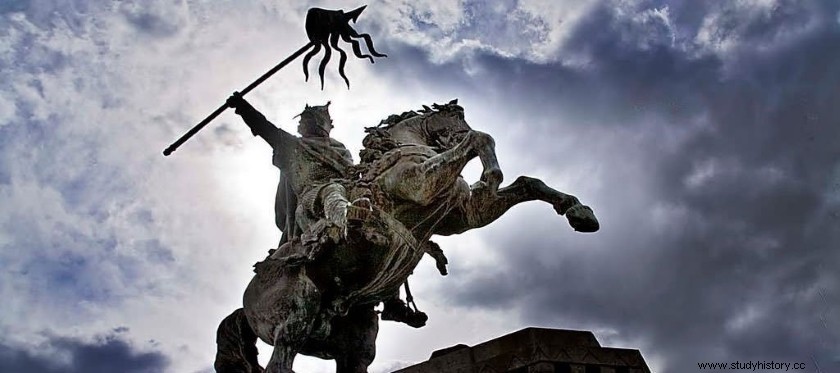
William I the Conqueror
2019 The Viking heritage.
A few years after the events in England in the Nordic countries, pagan practices were banned. As we said in the introduction, those Vikings who left Scandinavia to conquer the world, were conquered by the world. Many ended up integrating the European crowns. Those who decided to return to their land brought a new society there, which had little or nothing to do with the Viking tribes who decided to venture out to sea.
Fortunately for history, the adventure of the Viking people was passed down from father to son. Finally, some of them, mainly Icelanders and Norwegians, decided to put it in writing. Those known as Nordic Sagas, together with the great work of Archeology, have allowed us to know their history.
Today in the Nordic countries the memory is present. I can't talk about Sweden. I have not been and I plan to solve it as soon as I can. I was in Denmark and Norway in the last summer of 2019 (2020 is better to forget it). I traveled there by van thanks to my passion for the road. Both in Denmark, and especially in Norway, where I spent three weeks going from end to end, you can breathe everywhere that Viking past that they exhibit with remarkable pride. The Oslo museum is impressive, the three swords of Stavanger make you a tiny being, while the Viking enclave of the Lofoten Islands draws you fully into their lives.
But I would like to make us part of one of the most special moments of my encounter with the Viking culture. It was in a fjord, no matter what its name, we arrived around 8 in the afternoon and after dinner in the van, since it didn't get dark until eleven o'clock, we put on our boots and went out for a walk along the coast. There I found myself face to face, in one of the most beautiful places I have ever seen, these Viking tombs. I leave you two images of the moment.
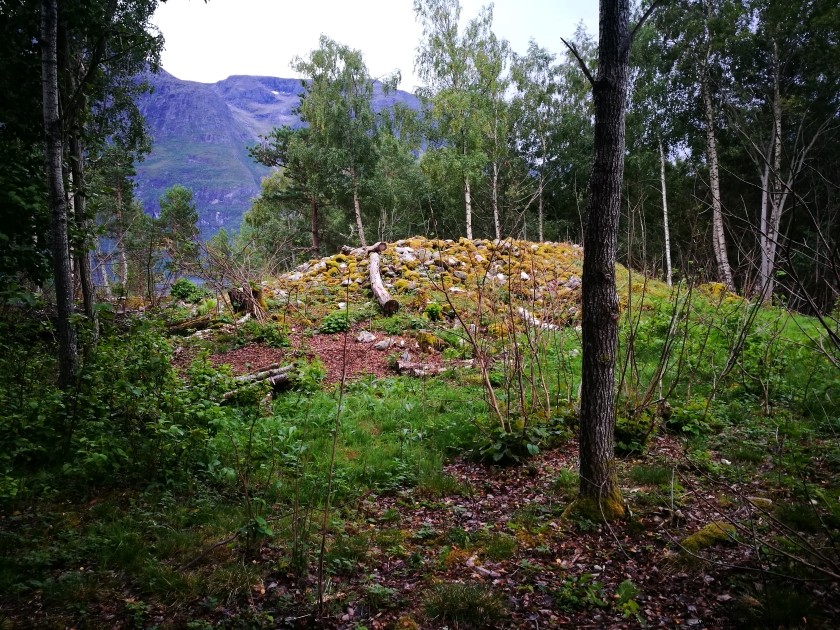
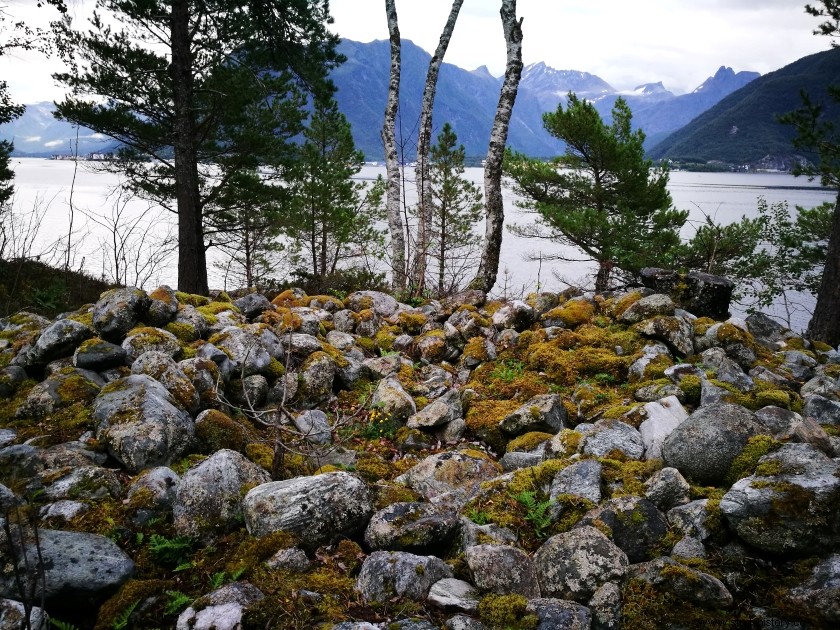
Recommended reading:
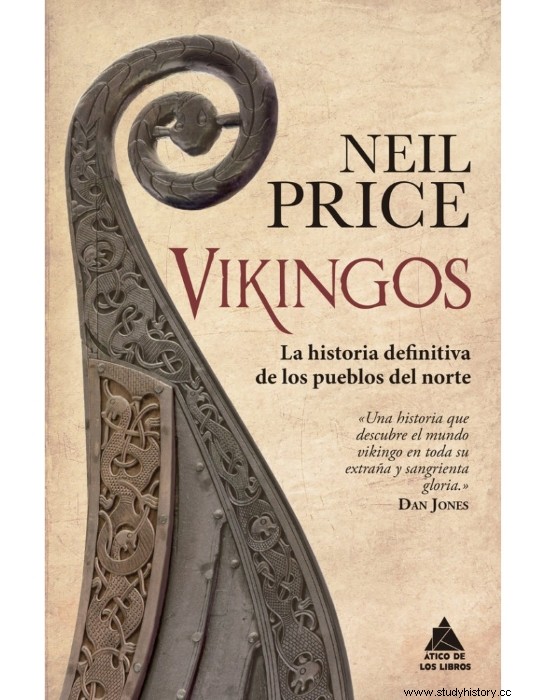
Buy. Vikings by Neil Price.
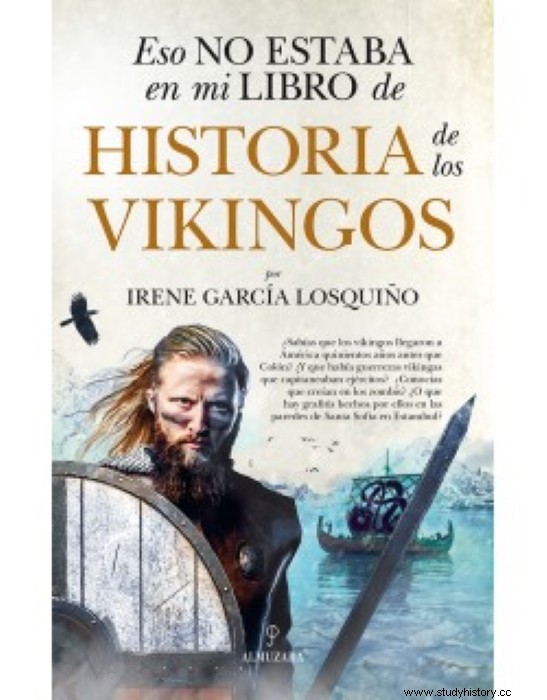
Buy. This was not in my Viking History book.
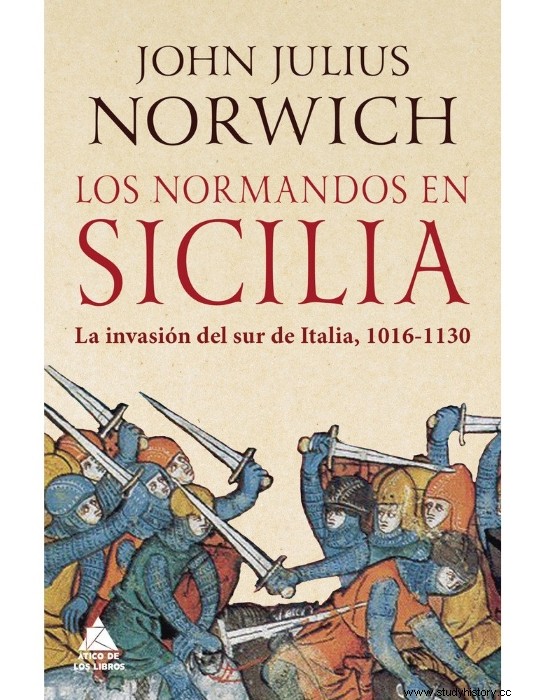
Buy. The Normans in Sicily.
